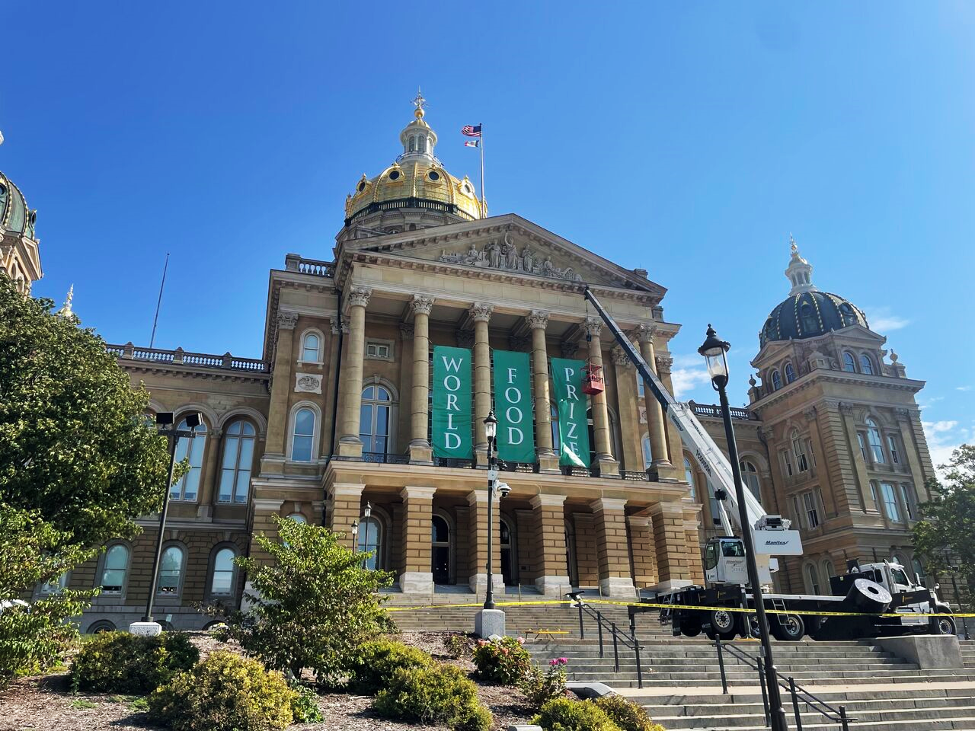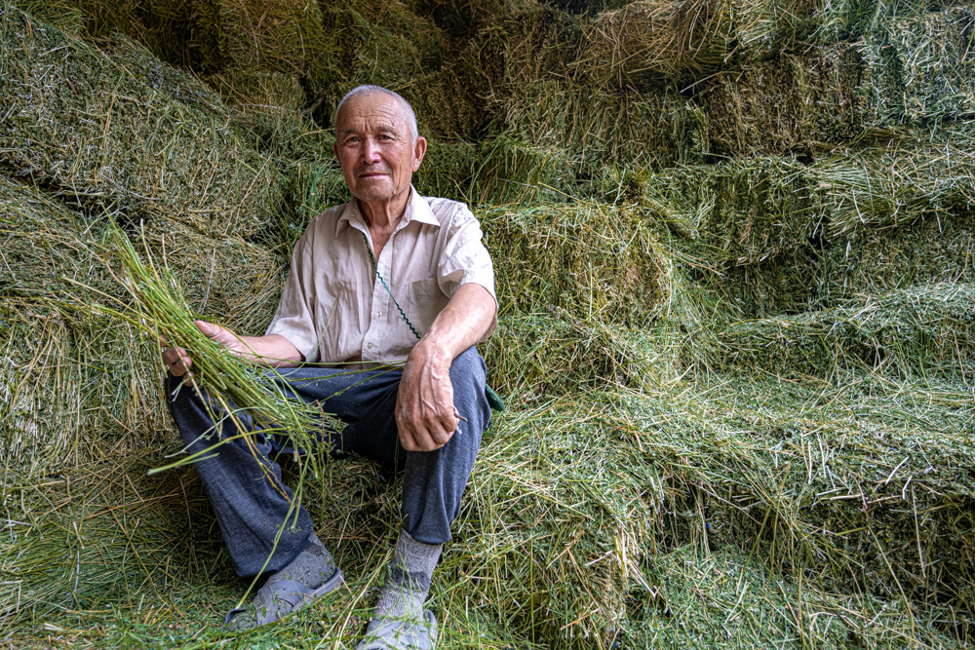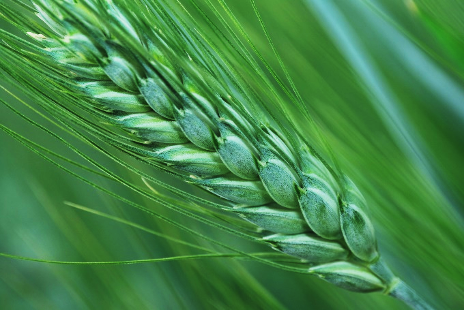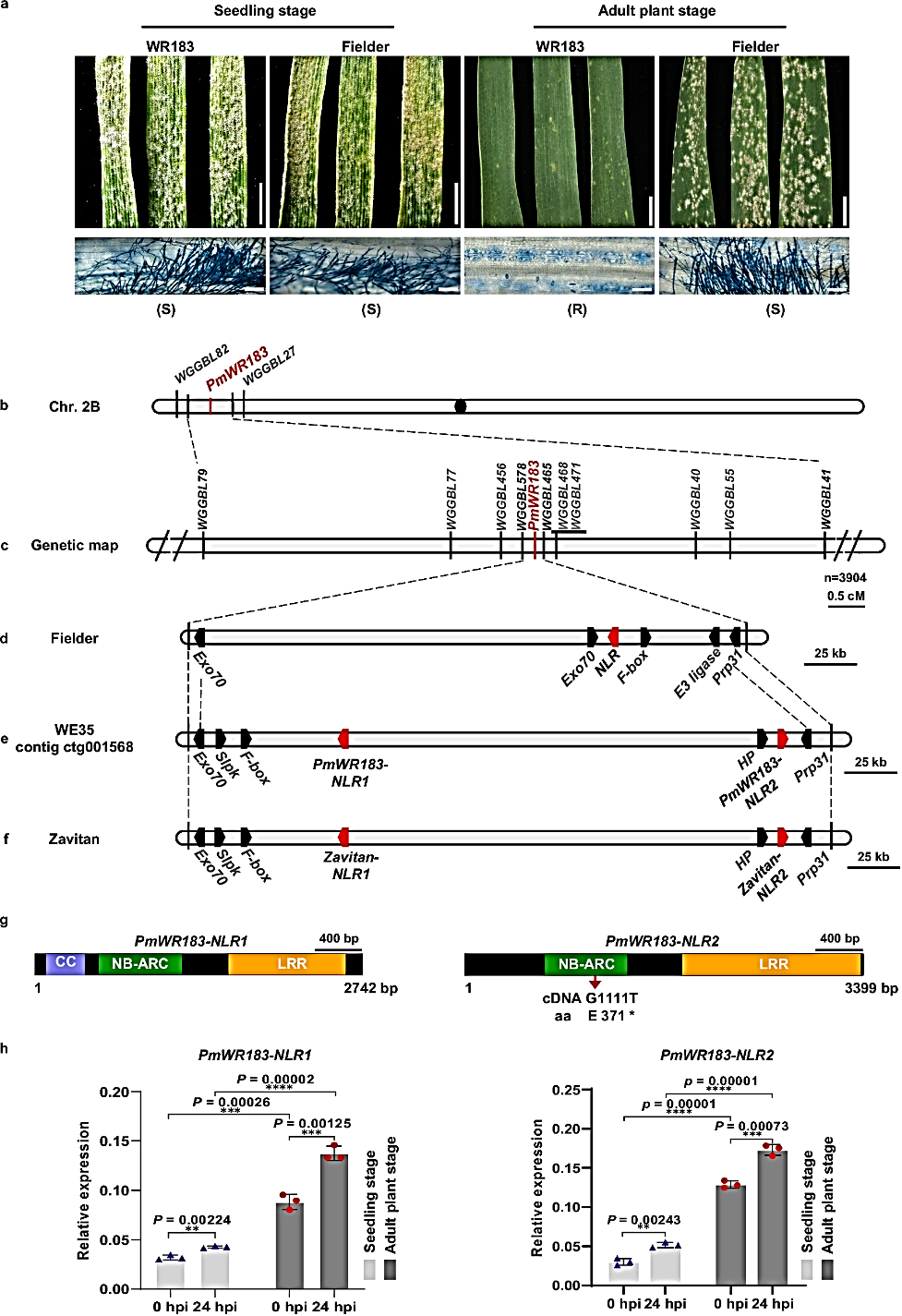BULLETIN 1
SOILutions for Security: CGIAR at the 2025 Borlaug Dialogue

CGIAR Oct. 22 2025
From October 21–23, CGIAR will join global partners in Des Moines, Iowa for the 2025 Borlaug Dialogue, hosted by the World Food Prize Foundation. This year’s theme, “SOILutions for Security,” highlights soil as a living system that underpins food and nutrition security. It underscores the foundational role that healthy soil and agriculture play in sustaining global stability. The focus on soil is timely: more than 40% of the world’s cultivated land is degraded, affecting over 3 billion people, and 95% of our food depends directly on soils. Treating soil merely as dirt overlooks its rich biodiversity and pivotal importance. By viewing soil as a living infrastructure, we can better grasp why investing in soil health is essential for resilient harvests, nutritious diets, and climate change mitigation and adaptation worldwide.
CGIAR’s Science-Based SOILutions for Resilience
As the world’s largest agricultural science network, CGIAR contributes a broad portfolio of “soilutions” – innovations that improve soil health, sustainable land management, agricultural productivity, and climate resilience. Drawing on decades of research and networks of partnership across continents, CGIAR centers and research programs deliver evidence-based strategies that help farmers and policymakers restore and sustain our soils. Key examples include:
nclude:
• Agroecology & Regenerative Practices: CGIAR’s work on agroecology and regenerative agriculture demonstrates how nature-based farming can rejuvenate soils. By restoring soil organic matter, enhancing biodiversity, and reducing chemical inputs, these approaches offer tremendous potential to strengthen rural livelihoods and improve access to diverse, nutritious food.
• Digital Soil Mapping & Precision Nutrient Management: In regions like Africa where up to 80% of cultivated land is degraded and nutrient depletion costs billions in lost harvests, CGIAR scientists are rolling out high-resolution digital soil maps to guide smarter farming. These maps use soil surveys and geospatial data to enable site-specific nutrient management. Farmers can apply the right fertilizer in the right amount, at the right time and place – following the “4R” principles of soil fertility. This precision approach is expected to improve productivity, reduce pollution, and support climate-smart practices.
• Biofertilizers & Soil Biodiversity: CGIAR researchers are also pioneering biosolutions – biologically based soil amendments like beneficial microbes and natural fertilizers that can replace or augment synthetic inputs. These microbial inoculants and biofertilizers restore soil fertility while reducing dependence on chemical fertilizers. Scientific trials show that such bioinputs can enhance plants’ nutrient uptake, improve soil structure, and even curb greenhouse gas emissions by cutting excess nitrogen runoff.
• Land Restoration & Sustainable Landscapes: Reversing land degradation and rebuilding healthy landscapes is another pillar of CGIAR’s work. From East Africa’s highlands to the dry Sahel, CGIAR research has shown that degraded soils can be revived through integrated soil fertility management, agroforestry, and landscape restoration. At a larger scale, CGIAR’s Multifunctional Landscapes Science Program is coordinating efforts to restore ecosystems and farmlands by linking science with community action. These efforts align with global goals like Land Degradation Neutrality, illustrating how evidence-based practices – from planting nitrogen-fixing trees to improving ground cover – can regenerate the land. Healthier soils not only raise long-term farm productivity but also increase carbon sequestration and biodiversity, creating more resilient and vibrant landscapes.
CGIAR at the 2025 Borlaug Dialogue
The CGIAR Multifunctional Landscapes (MFL) Science Program, which is coordinating CGIAR’s presence at the Dialogue, works to advance integrated solutions across food, land, and water systems. Through a systems lens, MFL supports science and partnerships that connect soil restoration with biodiversity conservation, carbon storage, and rural livelihoods. Its work demonstrates how healthy, multifunctional landscapes can anchor both ecological and human security, an idea that aligns closely with this year’s focus on soil as a foundation for resilience.
CGIAR experts will also be speaking in multiple sessions during the Dialogue, offering insights on topics such as conflict-sensitive agriculture, sustainable land management, and innovations in soil health. For the full agenda and list of CGIAR speakers, visit our event page.
The Borlaug Dialogue offers an important moment to advance collaboration and share progress. CGIAR’s work demonstrates that soil restoration is not only technically feasible, but also essential. By integrating soil health into climate action, food systems transformation, and peacebuilding strategies, we can achieve co-benefits that reach far beyond the farm.
In a world facing mounting ecological and social stress, healthy soils are foundational. At the 2025 Borlaug Dialogue, CGIAR is proud to contribute science that helps cultivate both resilience and security starting from the ground up.
See: https://www.cgiar.org/news-events/news/soilutions-for-security-cgiar-at-the-2025-borlaug-dialogue/
CGIAR’s Science-Based SOILutions for Resilience
As the world’s largest agricultural science network, CGIAR contributes a broad portfolio of “soilutions” – innovations that improve soil health, sustainable land management, agricultural productivity, and climate resilience. Drawing on decades of research and networks of partnership across continents, CGIAR centers and research programs deliver evidence-based strategies that help farmers and policymakers restore and sustain our soils. Key examples include:
nclude:
• Agroecology & Regenerative Practices: CGIAR’s work on agroecology and regenerative agriculture demonstrates how nature-based farming can rejuvenate soils. By restoring soil organic matter, enhancing biodiversity, and reducing chemical inputs, these approaches offer tremendous potential to strengthen rural livelihoods and improve access to diverse, nutritious food.
• Digital Soil Mapping & Precision Nutrient Management: In regions like Africa where up to 80% of cultivated land is degraded and nutrient depletion costs billions in lost harvests, CGIAR scientists are rolling out high-resolution digital soil maps to guide smarter farming. These maps use soil surveys and geospatial data to enable site-specific nutrient management. Farmers can apply the right fertilizer in the right amount, at the right time and place – following the “4R” principles of soil fertility. This precision approach is expected to improve productivity, reduce pollution, and support climate-smart practices.
• Biofertilizers & Soil Biodiversity: CGIAR researchers are also pioneering biosolutions – biologically based soil amendments like beneficial microbes and natural fertilizers that can replace or augment synthetic inputs. These microbial inoculants and biofertilizers restore soil fertility while reducing dependence on chemical fertilizers. Scientific trials show that such bioinputs can enhance plants’ nutrient uptake, improve soil structure, and even curb greenhouse gas emissions by cutting excess nitrogen runoff.
• Land Restoration & Sustainable Landscapes: Reversing land degradation and rebuilding healthy landscapes is another pillar of CGIAR’s work. From East Africa’s highlands to the dry Sahel, CGIAR research has shown that degraded soils can be revived through integrated soil fertility management, agroforestry, and landscape restoration. At a larger scale, CGIAR’s Multifunctional Landscapes Science Program is coordinating efforts to restore ecosystems and farmlands by linking science with community action. These efforts align with global goals like Land Degradation Neutrality, illustrating how evidence-based practices – from planting nitrogen-fixing trees to improving ground cover – can regenerate the land. Healthier soils not only raise long-term farm productivity but also increase carbon sequestration and biodiversity, creating more resilient and vibrant landscapes.
CGIAR at the 2025 Borlaug Dialogue
The CGIAR Multifunctional Landscapes (MFL) Science Program, which is coordinating CGIAR’s presence at the Dialogue, works to advance integrated solutions across food, land, and water systems. Through a systems lens, MFL supports science and partnerships that connect soil restoration with biodiversity conservation, carbon storage, and rural livelihoods. Its work demonstrates how healthy, multifunctional landscapes can anchor both ecological and human security, an idea that aligns closely with this year’s focus on soil as a foundation for resilience.
CGIAR experts will also be speaking in multiple sessions during the Dialogue, offering insights on topics such as conflict-sensitive agriculture, sustainable land management, and innovations in soil health. For the full agenda and list of CGIAR speakers, visit our event page.
The Borlaug Dialogue offers an important moment to advance collaboration and share progress. CGIAR’s work demonstrates that soil restoration is not only technically feasible, but also essential. By integrating soil health into climate action, food systems transformation, and peacebuilding strategies, we can achieve co-benefits that reach far beyond the farm.
In a world facing mounting ecological and social stress, healthy soils are foundational. At the 2025 Borlaug Dialogue, CGIAR is proud to contribute science that helps cultivate both resilience and security starting from the ground up.
See: https://www.cgiar.org/news-events/news/soilutions-for-security-cgiar-at-the-2025-borlaug-dialogue/
BULLETIN 2
Drought-Resilient Alfalfa Offers Lifeline to Kazakh Farmers

Figure: Farmer Aidarhan Nurbekov of the farm "Baiterek" in the Almaty region of Yenbekshi, in his alfalfa hay shed. Photo Shource: Michael major/Crop TRust
A new, climate-resilient variety of alfalfa has been released in Kazakhstan, offering hope to farmers fighting severe drought and water scarcity. The variety, named Tozimdi (meaning "stable" or "sustainable" in Kazakh), was developed through an international collaboration between the Kazakhstan Scientific Research Institute for Agriculture and Plant Growing (KSRIAPG) and the Australian Pastures Genebank at the South Australian Research and Development Institute (SARDI).
The success of Tozimdi comes from tapping into wild alfalfa relatives stored in global genebanks. Breeders cross-bred local alfalfa with these wild species, which are naturally endowed with exceptional traits such as drought- and heat-tolerance, able to withstand temperatures from -20 to 40 degrees Celsius (4 to 104 degrees Fahrenheit). This work was funded by the BOLD (Biodiversity for Opportunities, Livelihoods, and Development) project, led by the Crop Trust. The new variety is expected to provide stable forage in drylands, help slow desertification, and improve soil health due to alfalfa's natural nitrogen-fixing properties.
For Kazakh farmers, the economic benefits are immediate and substantial. Tozimdi is a high-yielding variety that can provide three to four harvests per year. Farmers who tested the plant across various regions were impressed with its resilience, yield potential, and ability to thrive during the cooler, wetter periods, while also enduring the hot, dry summers. This climate-smart approach to agriculture—drawing on genetic diversity to enhance crop resilience—is being celebrated as a vital step toward safeguarding Kazakhstan's food security and boosting the profitability of its livestock sector.
For more details, read the article on The Crop Trust website.
See https://www.isaaa.org/kc/cropbiotechupdate/article/default.asp?ID=21551
The success of Tozimdi comes from tapping into wild alfalfa relatives stored in global genebanks. Breeders cross-bred local alfalfa with these wild species, which are naturally endowed with exceptional traits such as drought- and heat-tolerance, able to withstand temperatures from -20 to 40 degrees Celsius (4 to 104 degrees Fahrenheit). This work was funded by the BOLD (Biodiversity for Opportunities, Livelihoods, and Development) project, led by the Crop Trust. The new variety is expected to provide stable forage in drylands, help slow desertification, and improve soil health due to alfalfa's natural nitrogen-fixing properties.
For Kazakh farmers, the economic benefits are immediate and substantial. Tozimdi is a high-yielding variety that can provide three to four harvests per year. Farmers who tested the plant across various regions were impressed with its resilience, yield potential, and ability to thrive during the cooler, wetter periods, while also enduring the hot, dry summers. This climate-smart approach to agriculture—drawing on genetic diversity to enhance crop resilience—is being celebrated as a vital step toward safeguarding Kazakhstan's food security and boosting the profitability of its livestock sector.
For more details, read the article on The Crop Trust website.
See https://www.isaaa.org/kc/cropbiotechupdate/article/default.asp?ID=21551
SCIENTIFIC NEWS
Paired NLRs originated from Triticum dicoccoides coordinately confer resistance to powdery mildew in wheat
Huaizhi Zhang, Miaomiao Li, Gaojie Wang, Keyu Zhu, Guanghao Guo, Hongkui Fu, Chenchen Hu, Zhiying Chu, Jinghuang Hu, Qiuhong Wu, Yongxing Chen, Dan Qiu, Jingzhong Xie, Delin Li, Beibei Li, Wenling Li, Lei Dong, Yikun Hou, Xuejia Cui, Baoge Huang, Yi Liu, Yiwen Li, Hongjie Li, Chengguo Yuan, Lingli Dong, Zhiyong Liu & Ping Lu
Nature Communications; 16, Article number: 9040 (2025)

Abstract
Wheat has evolved diverse resistance genes against powdery mildew, typically controlled by single-gene-encoded proteins. Here, we report the map-based cloning of PmWR183, a resistance locus encoding two adjacent NLR proteins (PmWR183-NLR1 and PmWR183-NLR2) from wild emmer wheat. Stable transformation and CRISPR/Cas9 knockout experiments demonstrate that the two NLRs function cooperatively: neither gene alone confers resistance, but their co-expression restores immunity, while disruption of either gene abolishes resistance. PmWR183 mediates a developmental stage-dependent response, with susceptibility at the seedling stage and strong resistance at the adult stage. Protein interaction assays reveal constitutive association of PmWR183-NLR1 and PmWR183-NLR2, supporting their cooperative role. Geographical and haplotype analyses show the locus originates from wild emmer and is rare in cultivated wheat, exhibiting at least nine haplotypes. Together, our findings uncover a rare NLR gene pair conferring effective resistance to powdery mildew, providing valuable resources for wheat breeding.
See https://www.nature.com/articles/s41467-025-64049-y
Wheat has evolved diverse resistance genes against powdery mildew, typically controlled by single-gene-encoded proteins. Here, we report the map-based cloning of PmWR183, a resistance locus encoding two adjacent NLR proteins (PmWR183-NLR1 and PmWR183-NLR2) from wild emmer wheat. Stable transformation and CRISPR/Cas9 knockout experiments demonstrate that the two NLRs function cooperatively: neither gene alone confers resistance, but their co-expression restores immunity, while disruption of either gene abolishes resistance. PmWR183 mediates a developmental stage-dependent response, with susceptibility at the seedling stage and strong resistance at the adult stage. Protein interaction assays reveal constitutive association of PmWR183-NLR1 and PmWR183-NLR2, supporting their cooperative role. Geographical and haplotype analyses show the locus originates from wild emmer and is rare in cultivated wheat, exhibiting at least nine haplotypes. Together, our findings uncover a rare NLR gene pair conferring effective resistance to powdery mildew, providing valuable resources for wheat breeding.
See https://www.nature.com/articles/s41467-025-64049-y

Fig.: Map-based cloning of PmWR183.
a Seedling and adult plant responses of parental lines WR183 and Fielder to Bgt isolate E20. Plant leaves were detached and photographed at 10 days post-inoculation (dpi) of the two-leaf (seedling) and 20 dpi of the jointing (adult) stage. Scale bar, 0.5 cm. R and S under pictures indicate the resistance and susceptibility of the plants to Bgt, respectively. Fungal structures of Bgt isolate E20 at 5 dpi (seedling stage) or 10 dpi (adult stage) were stained by Coomassie Brilliant Blue, respectively. Scale bar, 100 μm. b, c Genetic map of PmWR183 on the chromosome arm 2BS. d–f Physical map of PmWR183 locus on Fielder, contig ctg001568 of WE35, and Zavitan (WEW v1.0) reference genome, respectively. The red boxes indicate NLR genes. g Genomic structure and variations of PmWR183-NLR1 and PmWR183-NLR2 genes in WR183 and Zavitan. The nucleotide and corresponding amino acid change in PmWR183-NLR2 are shown as indicated. h The relative expression levels of PmWR183-NLR1 and PmWR183-NLR2 in WR183 at both seedling and adult plant stages under mock (uninoculated) and Bgt isolate E20 inoculation. Leaves from WR183 were collected 24 h after Bgt inoculation at both the two-leaf (seedling) and jointing (adult) stages. TaActin was used as the endogenous control. Data are means ± SEM (n = 3 biologically independent samples). Data were analyzed by two-tailed Student’s t-test (**p < 0.01, ***p < 0.001, ****p < 0.0001). Source data are provided as a Source data file.
a Seedling and adult plant responses of parental lines WR183 and Fielder to Bgt isolate E20. Plant leaves were detached and photographed at 10 days post-inoculation (dpi) of the two-leaf (seedling) and 20 dpi of the jointing (adult) stage. Scale bar, 0.5 cm. R and S under pictures indicate the resistance and susceptibility of the plants to Bgt, respectively. Fungal structures of Bgt isolate E20 at 5 dpi (seedling stage) or 10 dpi (adult stage) were stained by Coomassie Brilliant Blue, respectively. Scale bar, 100 μm. b, c Genetic map of PmWR183 on the chromosome arm 2BS. d–f Physical map of PmWR183 locus on Fielder, contig ctg001568 of WE35, and Zavitan (WEW v1.0) reference genome, respectively. The red boxes indicate NLR genes. g Genomic structure and variations of PmWR183-NLR1 and PmWR183-NLR2 genes in WR183 and Zavitan. The nucleotide and corresponding amino acid change in PmWR183-NLR2 are shown as indicated. h The relative expression levels of PmWR183-NLR1 and PmWR183-NLR2 in WR183 at both seedling and adult plant stages under mock (uninoculated) and Bgt isolate E20 inoculation. Leaves from WR183 were collected 24 h after Bgt inoculation at both the two-leaf (seedling) and jointing (adult) stages. TaActin was used as the endogenous control. Data are means ± SEM (n = 3 biologically independent samples). Data were analyzed by two-tailed Student’s t-test (**p < 0.01, ***p < 0.001, ****p < 0.0001). Source data are provided as a Source data file.
.png)











